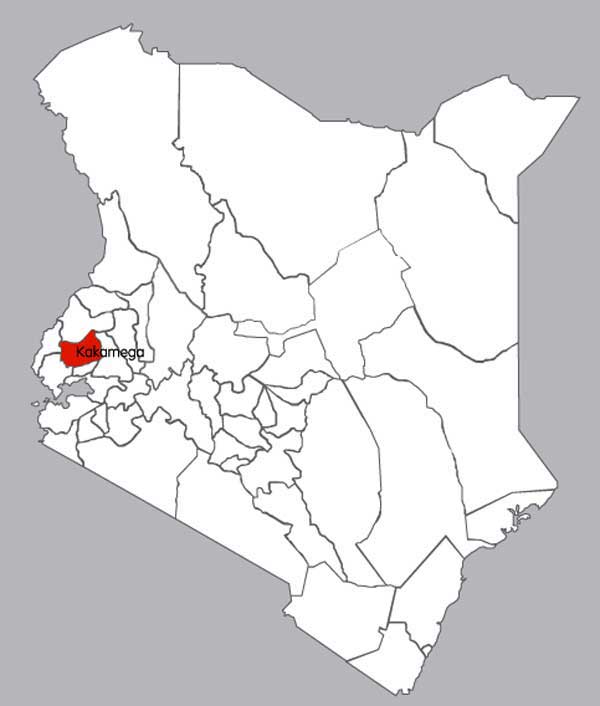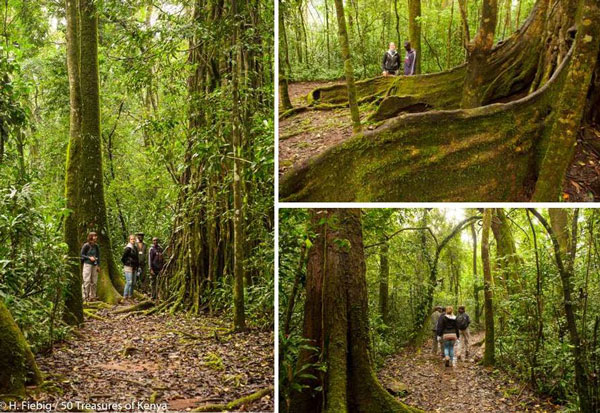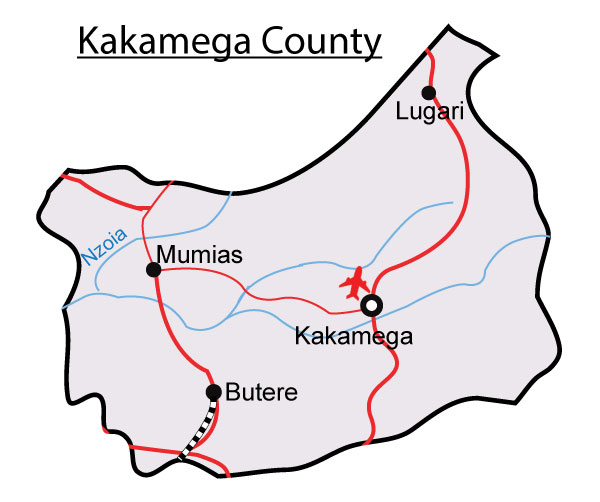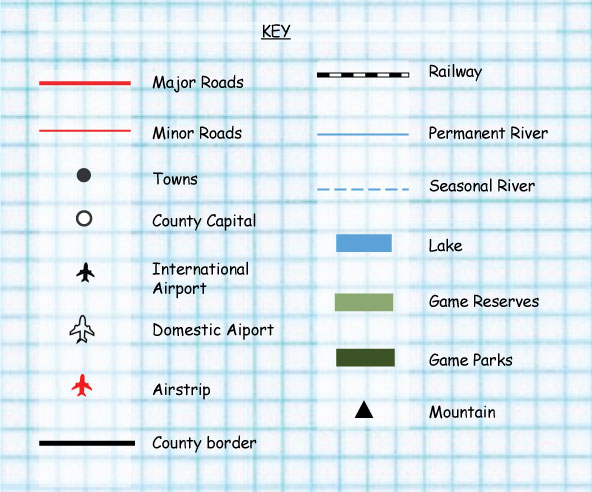Kakamega county is from the former western province. The counties capital is Kakamega town, which is also the largest. The second largest being Malava. Kakamega county lies 30km north of the equator. Kakamega was so named because the word "Kakamega" translates roughly to "pinch" in Kiluhyah which was used to describe how European colonists would eat the staple food ugali.

Rivers
Hills
[resource: 7868, align: left]
Mama Mtere Tree in Kakamega Forest



Kakamega County is home to the luhya people who are from the Bantu ethnic group. They are about 16% of the entire Kenyan population.
It has over 10 sub-tribes, each speaking a different dialect of the luhya language.
County is divided into seven divisions which are Ileho, Ikolomani, Kabras, Kakamega, lurambi, Navakholo, and Shinyalu. The division with the most population in the county is Kabra with a population of 149,510.
The division with the least Ileho with a population of 32,545.
Ugali, known as Obusuma in the Luhya language, is the traditional food of the Abaluhya. Ugali is made from either maize flour or cassava, or millet flour. It is usually served with chicken. While Luhyas eat many other foods, a meal is never complete without some ugali.
Traditional clothing is worn during special occasions and only by a chosen few. In cultural dances, performers may put on feathered hats and skirts made of sisal strands. For the Luhya groups that still maintain the traditional circumcision rites (mostly the Ababukusu), the initiates will often put on clothing made of skins and paint themselves with red ochre or ash. During war men painted themselves with frightening colors and wore frightening apparel such as horns.
Music and dance are an important part of the life of the Luhya. Children sing songs and dance for play and when herding livestock. Occasions such as weddings, funerals, and circumcision ceremonies all call for singing and dancing. Musical instruments include drums, jingles, flutes, and accordions. The Luhya are nationally renowned for their energetic and vibrant Isukuti dance, a celebratory performance involving rapid squatting and rising accompanied by thunderous, rhythmic drumbeats.
Young girls only wore strings of beads round their waists and necks and pierced their ear lobes to put in little decoration
Because of their knowledge of the rich Luhya traditions and religion they had prophets and traditional healers. The traditional healers used plants and herbs to heal the people.
Among the Abagusi nekesa was a girl and nafula a boy. Normaly after birth the placenta and umbilicord are buried behind the hut at a safe spot so that they are not found and tampered with by a witch (omulogi)
Naming was also done according to seasons for example among the maragoli the name” Injugu” was given during ground nuts harvest, “anzala ” born during extreme hunger and more.
This took place at the age of 15 years which marked the transition from childhood to adulthood, from boyhood to manhood
Nekesa (for a girl) and Wafula(for a boy) were names given during harvests among the Maragoli. And the Abanyole. This was a way of honoring the good harvest they got.
The luhya people are known for their energetic dance and music called the Isukuti. Istruments such as the drums, jingles, flutes, and accordions were used.
Poetry folk songs were recited to the young boys and girls in the evening after work which carried rich teaching about life morals.
The main crops grown in the County are sugarcane, maize, bean, cassava, finger millet and sorghum
The area best know for sugarcane in this region is Mumias constituency
The two main livestock in Kakamega county are cattle and chicken. With the tropical forest, they have a place to feed their cattle from.
In the county particularly in Kakamega forest there are a number of wildlife the inlucde: